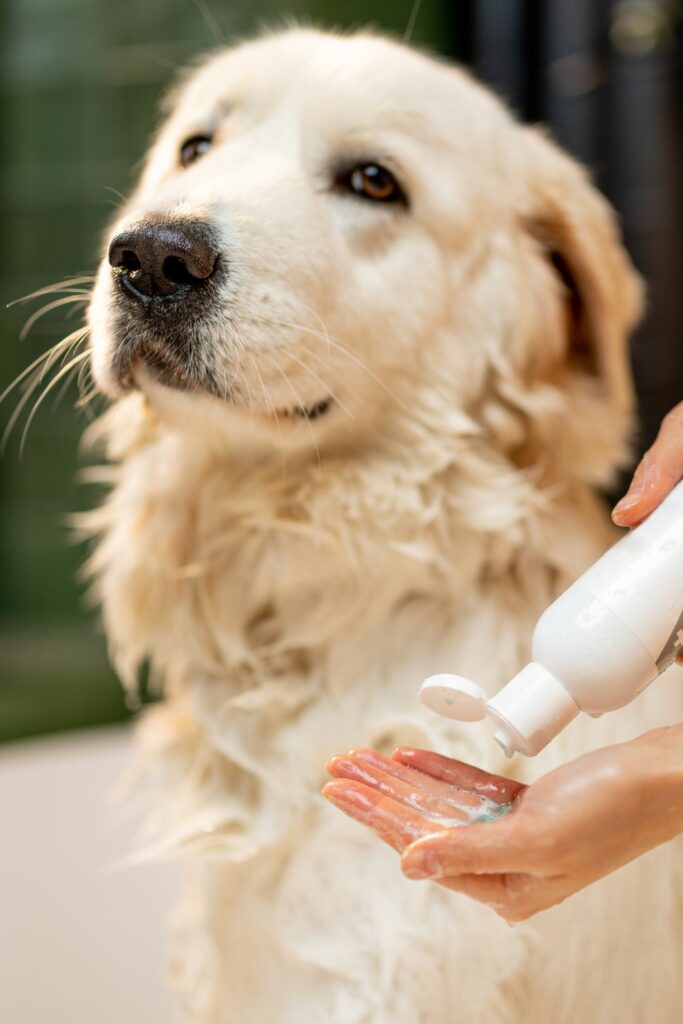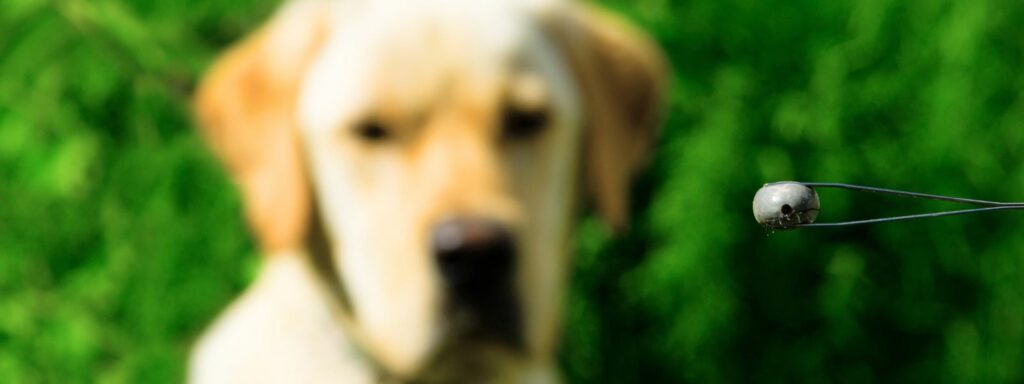Managing Ticks and Fleas Naturally
 Synne Hemsen Berg
Synne Hemsen Berg
Dealing with fleas and ticks is a common challenge for pet owners. These blood-sucking parasites are not mere nuisances; they carry with them a health risk both for your pet and your household. But, how can we safeguard our pups naturally without resorting to chemicals? Let’s dig into the world of natural tick and flea repellent for dogs, exploring both dietary and topical treatments that have been embraced by pet parents globally.
Why Prevent Ticks and Fleas
Ticks and fleas bring with them a variety of potential hazards, which is why pet parents need to manage these parasites.

- Lyme Disease: Ticks are infamous for transmitting Lyme disease, which can cause lameness, joint issues, and other health complications in dogs.
- Flea allergy dermatitis: Some pets can develop allergies to flea saliva, leading to intense itching and skin infections.
- Other diseases: Various other diseases, such as ehrlichiosis, anaplasmosis, and tapeworm infections, can be transmitted through ticks and fleas.
Tick and Flea Season in South Africa
In South Africa, tick and flea activity is influenced largely by the climate, which can vary across the country due to its geographical diversity. However, generally speaking, the tick and flea season in South Africa tends to be during the warmer and more humid months.
- Peak Season: Spring and Summer (September to March) usually see a surge in tick and flea activity because of the warmth and increased humidity, which provide ideal breeding conditions for these pests.
- Off-Peak Season: Although Winter (June to August) might see a decrease in tick and flea populations, especially in the colder regions of South Africa. However, it is essential to note that these pests can be present year-round, especially in warmer, coastal areas.

Regional Considerations:
- Coastal Areas (such as Durban or the Garden Route): The warmer, more humid climate means that fleas and ticks can be active all year round.
- Inland Areas (such as Johannesburg or Pretoria): Ticks and fleas are more seasonal, typically becoming prevalent in the warmer months.
Natural Tick and Flea Prevention
1. Diet: preventing parasites from the inside out
A solid frontline defence against ticks and fleas can start with what your dog eats. Believe it or not, certain dietary additions can make your canine less appetising to these bothersome critters.
Garlic:
While garlic is typically frowned upon for dogs due to its potential toxicity in high doses, some veterinarians and pet owners swear by using it in minimal, controlled amounts as a flea repellent. The sulphur that is expelled through the dog’s skin after consuming garlic reportedly deters fleas. General Guideline (Use with Caution and Veterinary Approval):
- Size of the Dog: Small dogs (up to 7kg) might be given roughly ½ a clove per day, medium dogs (10-20kg) about 1 clove, and larger dogs (20kg+) 1-2 cloves.
- Form: Use fresh, finely chopped garlic and powders or supplements for this purpose.
- Duration: Giving garlic daily for extended periods is typically not recommended due to its cumulative effect. Some sources recommend a few days per week and taking breaks, especially during the tick and flea low season.

Important Notes:
- Puppies: Puppies and young dogs should not be given garlic.
- Breed sensitivities: Certain breeds (like Akita and Shiba Inu) have a higher sensitivity to garlic and it should be avoided.
- Pregnant or nursing dogs: Should not be given garlic.
- Dog’s health: Dogs with anaemia or who are scheduled for surgery should avoid garlic due to its impact on red blood cells.
- Interaction with medication: If your dog is on any medication, especially blood thinners, avoid garlic as it can interact with the medication.
Apple cider vinegar:
Adding a bit of apple cider vinegar to your dog’s water may not only improve their skin and coat health but can also make them less tasty to ticks and fleas. Ensure to introduce it gradually and in safe quantities to ensure it doesn’t upset your dog’s stomach. A guideline for the amount of ACV you can add to your dog’s water bowl is:
- Up to 10kg: 1 tsp
- 10kg – 15kg: 2 tsp
- 15kg – 40kg: 1 tbs

You can also add 50/50 ACV and water in a spray bottle to make a natural tick and flea-repellent spray.
Nutritional additives:
Supplementing your dog’s diet with B vitamins and omega-3 fatty acids can enhance skin health, making it a robust barrier against flea and tick infestations. Ingredients like brewer’s yeast and fish oil can be beneficial in this regard. Nala Health dog food contains brewer’s yeast and omega-3 and is formulated for among other things healthy skin and coat.
2. Topical Treatments: a direct combat strategy
Essential oils:
When used correctly and safely, certain essential oils can act as a potent deterrent for pests. Oils such as lavender, cedarwood, and lemon eucalyptus can be diluted and applied to your dog’s coat, creating a fragrant shield against ticks and fleas.

Note: Always ensure to dilute essential oils in a carrier such as coconut or olive oil and perform a patch test to avoid any adverse reactions.
Neem oil:
Famed for its medicinal properties, neem oil stands out as an effective natural repellent against ticks and fleas. It can be mixed with carrier oil and applied to the dog’s fur, ensuring a tick-free coat while also promoting skin health.
Diatomaceous earth:
Food-grade diatomaceous earth can be lightly dusted on your dog’s coat to provide a protective layer against pests. Dust their coat 2 to 3 times a week, making sure to avoid the eyes and nose, for an effective tick and flea repellent. The microscopic, sharp particles of this natural powder are harmless to our dogs but deadly to parasites. It can also be used as a natural dewormer and is very cost-effective.

Herbal flea collars:
Creating a homemade flea collar infused with dog-safe essential oils can be a fantastic way to provide constant, gentle protection against fleas and ticks without using harsh chemicals. Note that dogs have a sensitive sense of smell so strong essential oils close to their snout may cause irritation, sneezing and discomfort.
Holistically Managing Ticks and Fleas
An integrated approach of coupling dietary changes with topical applications enhances the chances of preventing tick and flea infestations. Regularly check your dog’s coat, especially after outdoor activities, to ensure any lurking pests are promptly removed.
Always consult with a veterinarian before introducing new elements to your dog’s diet or skincare routine to safeguard against potential risks and to ensure that the chosen methods are safe and effective.
Schedule for natural tick and flea management in dogs
Note: Please ensure all methods, especially the use of garlic and essential oils, are vet-approved to prevent any health complications for your furry friend.
Weekly Actions:
- Mondays and Thursdays: Add a small, vet-approved amount of finely chopped garlic to your dog’s meal. Add a few drops/a teaspoon of ACV to your dog’s water bowl. Always introduce ACV gradually to ensure it’s well-tolerated.
- Tuesdays and Fridays: Apply diatomaceous earth.
- Before walks: Put on your dog’s herbal flea collar and/or apply a natural tick and flea spray. You can make your own spray with ACV or buy one from your local pet store. Make sure you choose a natural spray if you want to stay away from chemicals.
- Evenings: Check your dog for ticks and fleas. A flea comb can be useful, especially for dogs with long hair. When checking for ticks remember to check hard-to-see areas like between the toes, in the groin and armpits.

Monthly Actions:
- 1st Day: Administer a slightly larger, yet safe and vet-approved, garlic dose.
- Weekly: Mow the lawn to keep it short.
- Mid-Month: Deep clean the house and yard, paying attention to potential breeding spots for ticks and fleas. You can add diatomaceous earth to areas where your dog particularly enjoys playing or spending time in the garden. Clean dog’s bedding at high temperatures. Cedar mulch is a deterrent for ticks and fleas and can be used in garden beds and around the perimeter of your property.
- Bathing: Depending on the length of your dog’s coat you can give your dog a bath a few times a month with a mild tick and flea shampoo.
Final Note:
Adhering to a holistic schedule for tick and flea management in dogs allows you to navigate through prevention and infestation situations naturally. However, ensuring that each method, especially those involving ingestion or skin application of natural remedies like garlic or essential oils, is safe for your specific pet is paramount. Always prioritise your pet’s health and seek professional advice before introducing new elements to their routine. Remember, a happy pet makes a happy home!

